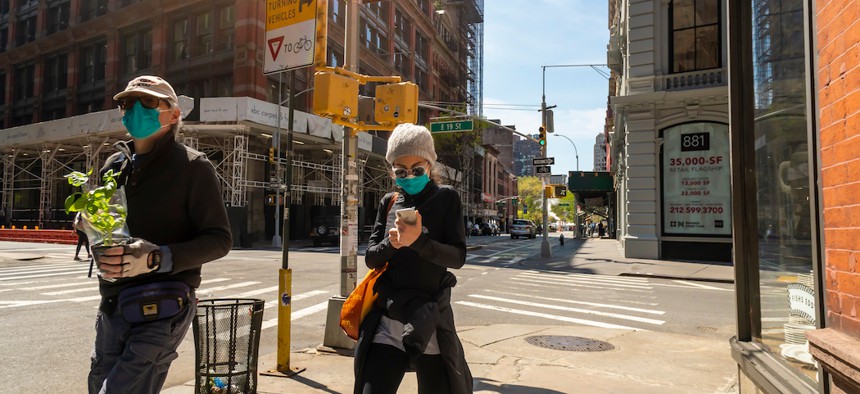With more than 1,000 new cases of the coronavirus each day, Gov. Andrew Cuomo is likely extending New York’s stay-at-home order in most areas of the state until the end of May – the latest sign that downstate will largely remain on lockdown.
The governor said he will take a gradual approach when it comes to easing restrictions downstate. “Know what you are doing before you do it,” he told reporters Monday. “We have said there is no light switch when you flip a switch and everybody goes back to doing what they’re doing.”
Cuomo has emphasized the dangers of a second wave of infections and public opinion remains firmly in favor of his job performance and the social distancing restrictions he has imposed – despite the formidable damage to the state’s economy. Considering the population density, economic connections to neighboring states and ongoing challenges with increasing the state’s testing capacity, the gradual reopening of the downstate economy could stretch into the summer.
“We’re going to turn the valve on reopening,” Cuomo told reporters Monday. “Then you watch the dials.” These include the hospitalization rate, the infection rate, antibody testing that shows who has had the virus, and diagnostic testing that shows how many people have recently been infected. A turn for the worst on any of these measures could slow the pace of reopening – or even compel Cuomo to reverse those actions.
Current plans for reopening the state economy would allow some economic activity to resume in some areas of upstate as soon as May 15. A two-week waiting period would follow before the state begins allowing additional businesses to reopen on a case-by-case basis, but that will be much more complicated in the New York City area compared to the rest of the state, according to Cuomo.
It remains unclear just how long the first phase of the reopening could last – the governor appeared to be leaving himself some flexibility – but even if the second phase began sometime in early to mid-June, individual businesses would still have to make their case to the state that they are essential enough to reopen and could open without endangering their employees and customers. Cuomo has said that discussions are ongoing with local leaders on the specific requirements that would apply to different regions of the state. “One caveat is, you can’t do anything in any region that would increase the number of visitors to that region,” he said Sunday.
New York is also part of a seven-state alliance that is coordinating a regional approach to reopening. “You won’t be in lockstep,” Cuomo told reporters on Sunday. “But before we do anything, I want to make sure we know what we’re doing, because you’ll see people react to different activity levels in different communities.”
As things currently stand, the worst of the pandemic appears to have come and gone. While recent reporting has questioned the governor’s handling of the crisis, the public has continued to give him high marks. Nearly two-thirds of registered voters said the state is heading in the “right direction,” and even a majority of Republicans now have a favorable view of the governor, according to a Siena College poll released on Monday. The poll also showed that even if large events were to happen during the summer, 69% of New Yorkers would be unlikely to attend.
Since the first days of the pandemic, Cuomo has appeared to place a good deal of emphasis on keeping public opinion on his side. He has projected an image as a can-do leader at times, while also serving as a comforter-in-chief at times.
If the governor were to lift social distancing restrictions too quickly, thousands more people could die. It would likely squander the governor’s newfound popularity and political capital as he aims to reshape the Empire State after the pandemic subsides. “If you are not smart, you will see that infection rate go right back to where it was,” Cuomo said Monday.
With hundreds of people dying in the state per day, there is reason to believe that the governor would lean toward later – rather than sooner – when it comes to lifting social distancing restrictions to the point where millions of downstate residents could return to any semblance of normalcy.


